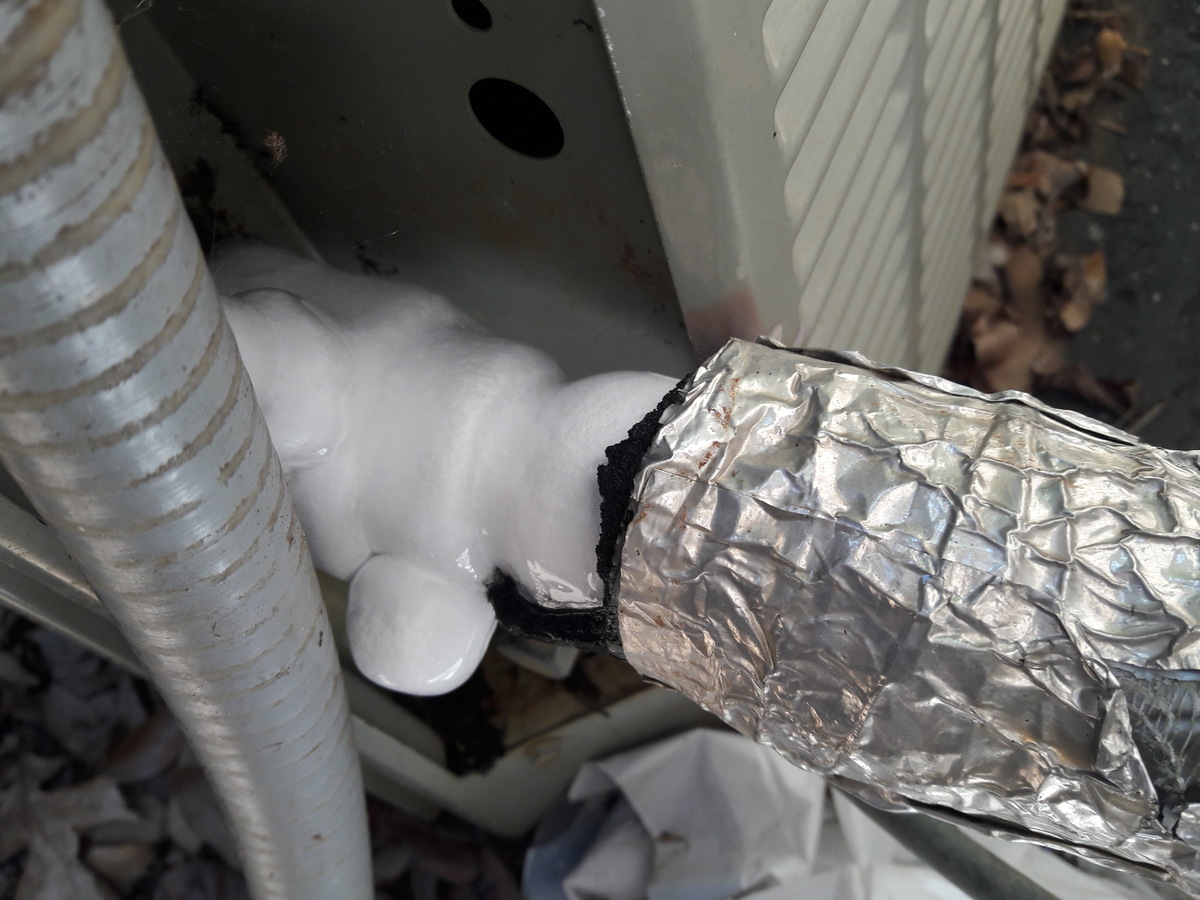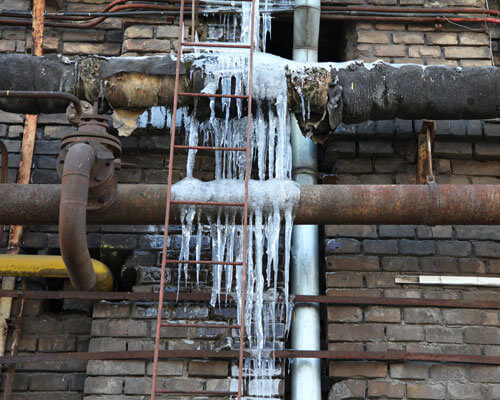Icy Air Conditioner Pipe - Causes and How to Fix the Problem
Icy Air Conditioner Pipe - Causes and How to Fix the Problem
Blog Article
This great article listed below relating to What Do I Do If My AC Pipe Is Frozen is seriously engaging. Read on and make your own personal final thoughts.

Introduction
Uncovering that your air conditioner pipeline is frozen can be worrying, particularly during warm summer months when you count on your ac system the most. Understanding what to do in such a scenario is essential to avoid additional damages to your cooling system and guarantee your comfort inside.
Understanding the Causes
A number of factors can add to the freezing of an air conditioning pipe. Recognizing these reasons can help you address the issue successfully.
Absence of Airflow
One typical reason for an icy AC pipeline is inadequate air flow. When the air movement over the evaporator coil is limited, it can cause the coil to drop below freezing temperature, bring about ice development on the pipeline.
Reduced Refrigerant Levels
Not enough cooling agent degrees in your AC system can also result in an icy pipeline. Reduced cooling agent levels can trigger the pressure in the system to drop, leading to the cold of wetness on the evaporator coil.
Cold Weather Conditions
In colder climates, freezing temperature levels outside can add to the freezing of AC pipelines. If your a/c unit is not properly protected or if there are leaks in the ductwork, cool air can infiltrate the system, causing the pipeline to freeze.
Dirty Air Filters
Filthy or blocked air filters can limit airflow in your air conditioner system, leading to various concerns, including a frozen pipeline. It's necessary to change or clean your air filterings system routinely to make sure correct air flow and prevent ice build-up.
Indications of a Frozen A/c Pipe
Identifying the indicators of a frozen a/c pipeline is essential for timely activity.
Lowered Airflow
If you notice a substantial decline in air movement from your vents, it can suggest a frozen pipeline.
Ice Buildup on the Pipe
Visible ice accumulation on the refrigerant line or the evaporator coil is a clear indicator of an icy a/c pipeline.
Unusual Sounds from the Unit
Uncommon sounds, such as hissing or bubbling, originating from your AC system can signify that there's ice present on the pipe.
Immediate Actions to Take
When confronted with an icy air conditioner pipe, it's important to act promptly to prevent further damage to your cooling system.
Shutting off the a/c
The very first step is to switch off your a/c to avoid the system from running and worsening the problem.
Checking for Blockages
Examine the area around the interior device for any type of obstructions that may be blocking air movement, such as furnishings or curtains.
Thawing the Pipe
You can utilize gentle techniques like placing towels taken in warm water around the icy pipeline to assist thaw it slowly.
Preventive Measures
Taking safety nets can help prevent future occurrences of a frozen AC pipe.
When DIY Methods Fail
If your efforts to thaw the pipeline or address various other problems are unsuccessful, it's time to employ a specialist.
Relevance of Hiring a Professional HVAC Technician
A certified HVAC technician has the knowledge and devices needed to diagnose and fix issues with your AC system safely and properly.
Routine Maintenance Checks
Set up routine upkeep talk to a specialist HVAC specialist to make sure that your AC system is running effectively.
Transforming Air Filters
On a regular basis change or clean your air filters to prevent airflow constraints and keep ideal efficiency.
Shielding Exposed Pipes
If your AC pipelines are exposed to chilly temperature levels, take into consideration insulating them to prevent cold during winter season.
Looking For Professional Help
If DIY techniques stop working to settle the concern or if you're unsure about how to proceed, it's ideal to look for aid from a certified HVAC professional.
Verdict
Taking care of an icy air conditioning pipe can be an aggravating experience, but knowing just how to react can assist minimize damages and bring back convenience to your home. By comprehending the causes, acknowledging the signs, and taking punctual activity, you can effectively resolve the problem and avoid future incidents.
Frozen AC Line: Why It Happens & What To Do About It
A frozen AC line can be a rather peculiar sight in a place like Phoenix, Arizona where nothing ever freezes. In this post, we’ll discuss what makes an air conditioner line frozen – and what you can do about it.
Dirty Air Filters
Did you know that you should be cleaning or replacing your air filters on a monthly basis? Failing to do this can result in airflow issues that, in turn, cause your evaporator coils and lines to freeze over. You’ll notice a buildup of ice on both components, although the buildup on your pipes will, of course, be more evident unless you open your air condition up to reveal the coils.
What To Do About It
Give your air filter a good cleaning if it’s reusable. If not, replace the filter outright. Next, switch your air conditioner’s fan setting on and leave it there for 2-3 hours. This will draw warm air in, helping to thaw your evaporator coil. You can also check out this article for some tips on cleaning the coils themselves if you’d like to speed the process up. Before you switch the unit back to its normal state, make sure the supply vents are completely unobstructed and free of dust or other debris.
If you keep having this issue even after replacing your filters regularly, contact a local HVAC repair company and have them inspect your evaporator coil, ductwork, and any other components that may be at fault. If you live in the Phoenix, Arizona area, give American Home Water and Air a call.
Low Refrigerant Levels/Leakage
What To Do About It
Contrary to what air conditioner “recharge” companies often tell their clients about refrigerant, it should never need to be simply refilled. You see, refrigerant runs in what experts refer to as a “closed loop.” Refrigerant really shouldn’t be leaving that loop. If it is, you’ve got a leak.
Paying someone to come and pump more refrigerant into your system (aka “recharge” it) isn’t the solution. Doing that will simply kick the can down the road. Besides, refrigerant leaks can be harmful to the environment and people in your home.
Rather, you need to take care of the leak with the help of a technician. Check out this article for some more information about dealing with air conditioners that are leaking refrigerant. Before you contact a technician, switch your thermostat to the off position. Then, switch the fan setting on and let it run for 2-3 hours so the unit can thaw.
Improper Temperature Setting
Improper temperature settings can also cause a drop in your air conditioner’s pressure. What many people don’t realize is that air conditioners are actually designed to run when temperatures have fallen above roughly 60 degrees Fahrenheit. If you run the unit when it’s cold outside, you’ll run into many issues, including frozen components.

I recently found that post on Have a Frozen AC Line? Here’s How to Fix It while doing a search on the web. Enjoyed reading our blog posting? Please share it. Help other people locate it. Thank you for taking the time to read it.
Course Detail Report this page